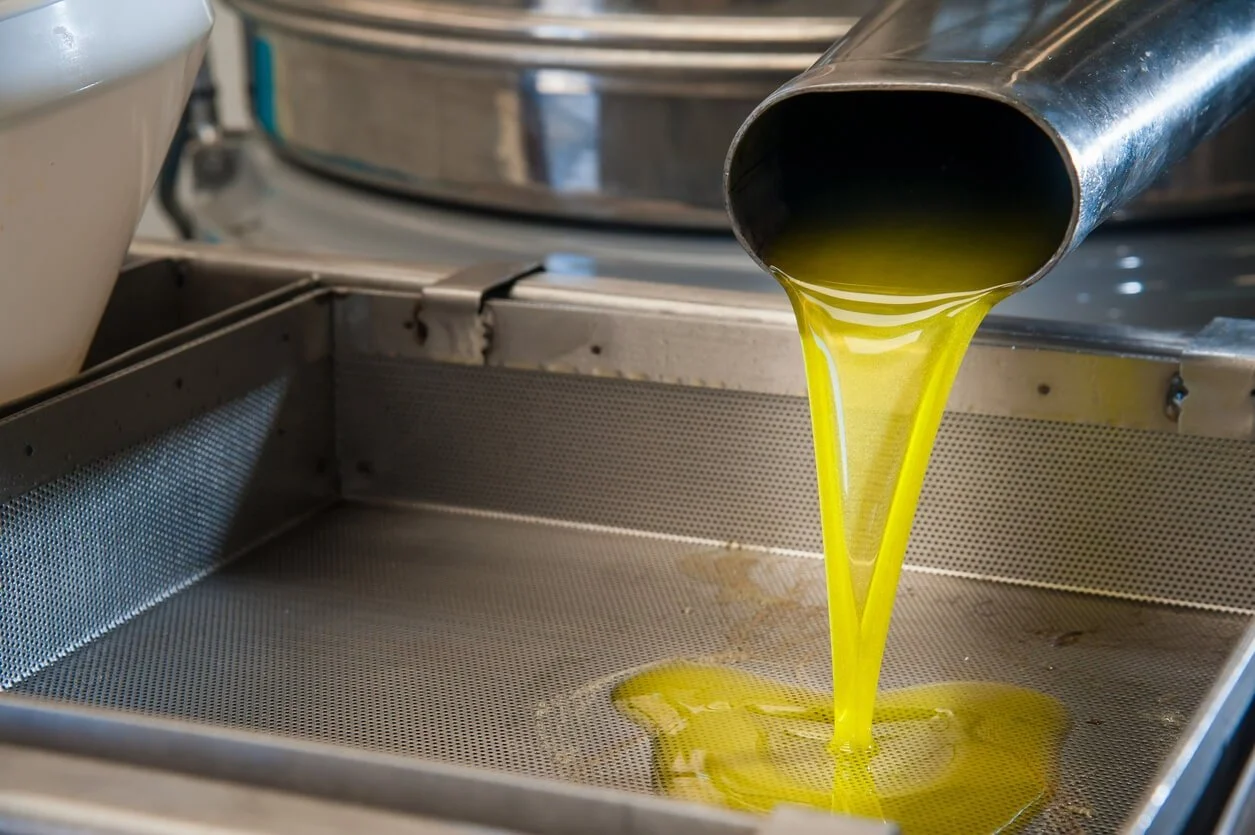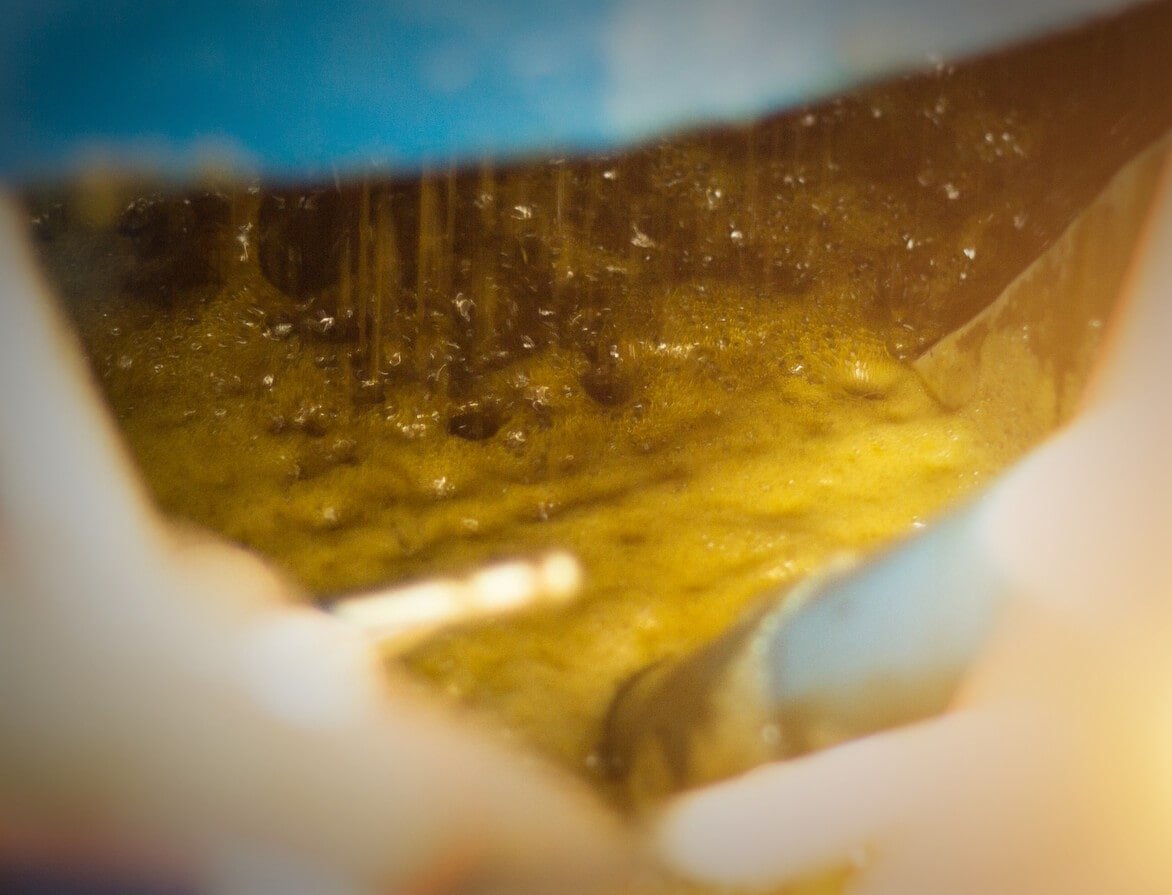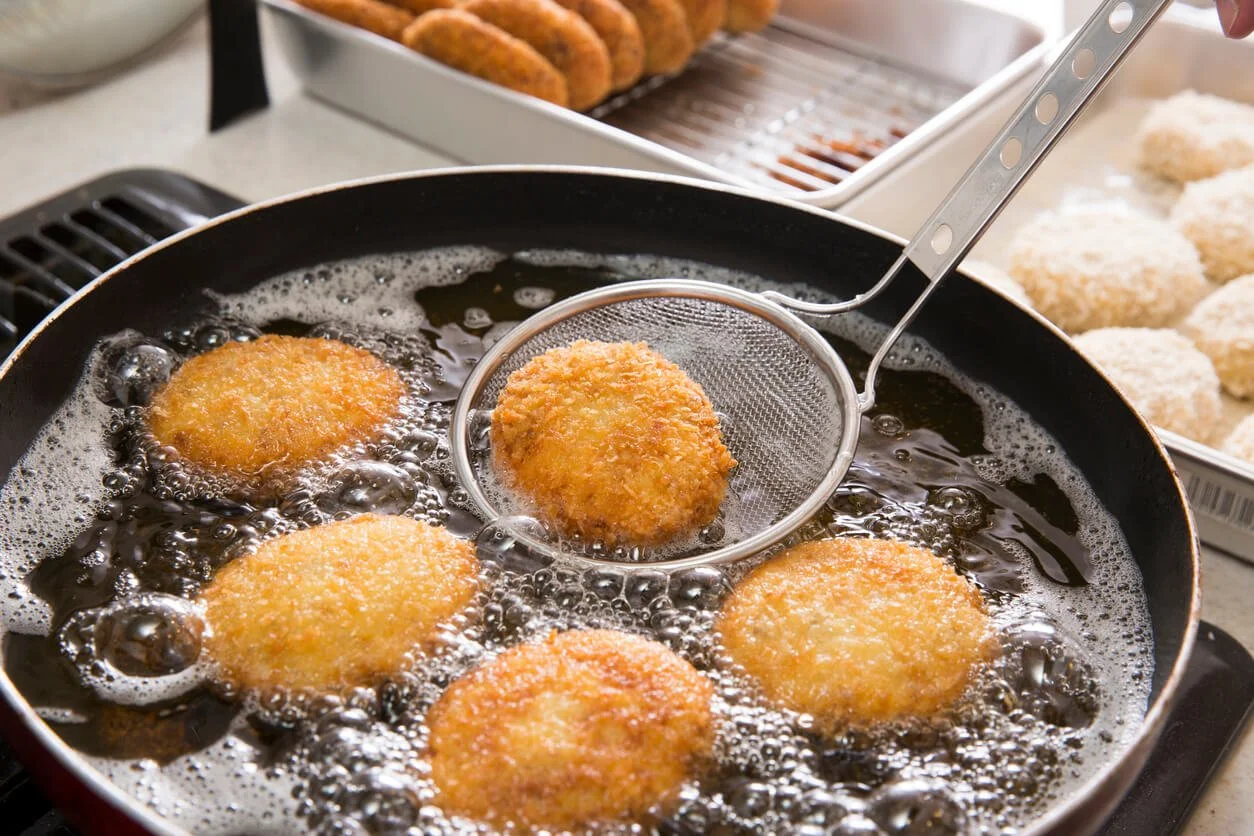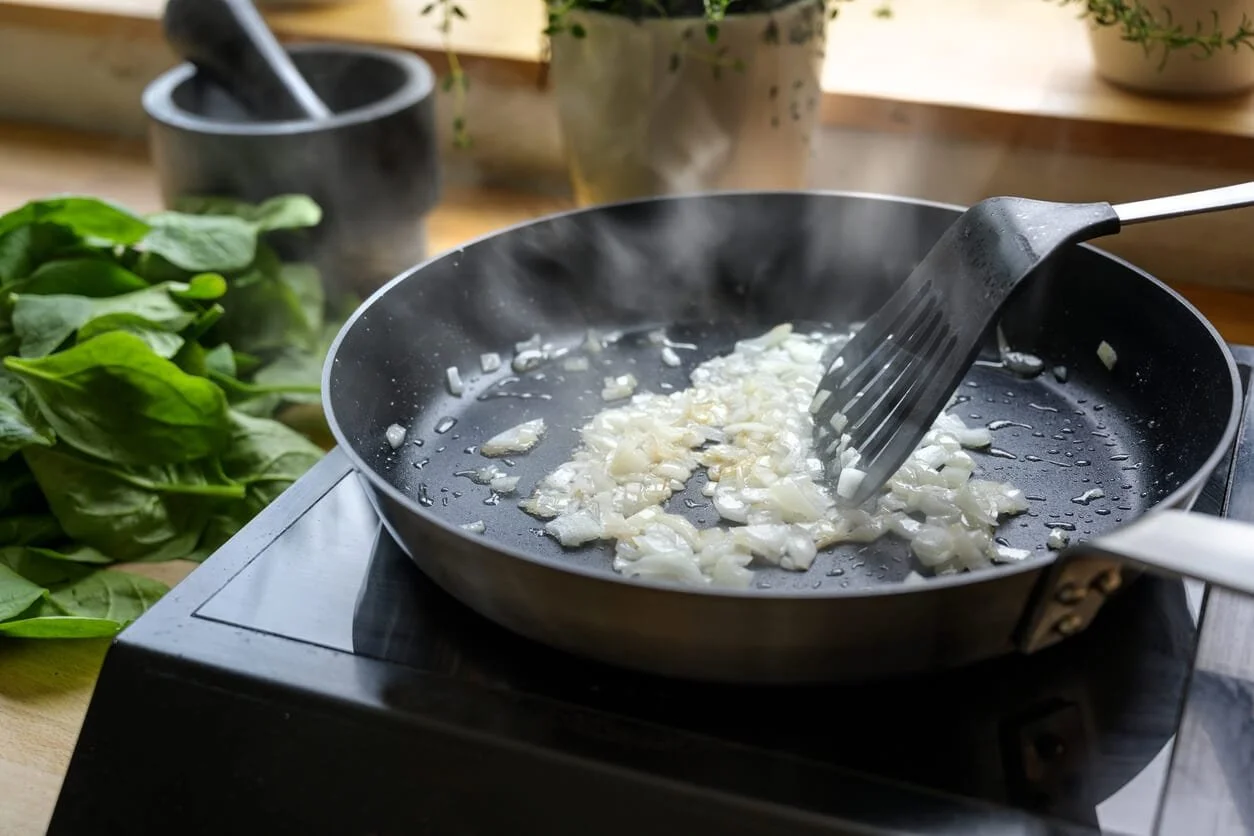Cooking Fats & Their Applications
Discover > Texas Home Cooking > Cooking Fats & Their Applications
There's a lot of debate when it comes to cooking fats and their various applications in the kitchen from all its methods of frying, their impact on our health, their impact on the environment, and much more. This post goes into deeper detail about some of these facts and how they affect the various parts of our health and environment.
Childhood Obesity Warning Signs & What We Can Do About It
Explore the important topic of childhood obesity and learn about warning signs and proactive steps we can take as parents. Join the conversation on promoting a healthy lifestyle for our children.
Here we will go over the oils most commonly used to deep fry foods and how exactly they're extracted from their legumes, seeds, (how long do seeds last?) or fruits.
Oil Extraction Methods
Expeller Pressing
This involves manually pressing the seed or plants together. The friction causes a lot of heat which often causes nutrients and natural esters to be depleted suiting this method best for neutral, high smoke point oils.
Cold Pressing
Cold pressing involves the same process of manually crushing the seed or plants to extract the oil as expeller pressing except that the temperature is carefully controlled preventing any chemical breakdown.
Solvent Extraction
This method of extraction involves using a solvent agent (the most common is hexane) in a base to extract the oil. After the oil is extracted the solvent is separated, the fat is bottled, then shipped off to distributors. Many purists and naturalists aren’t very fond of this method given the trace amounts of chemicals it leaves behind.
CO2 Extraction
This method involves filling an airtight chamber with CO2 gas to press the oil, then extracting said CO2 leaving a completely pure, pressed oil. This method is becoming highly favored across the world for every form of oil extraction.
Life in Self-Quarantine: Fun and Healthy Recipes to Try as a Family
Turn self-quarantine into an opportunity for family bonding with fun and healthy recipes to try together. Explore delicious and nutritious options that make cooking a family affair.
Post-Pressing Processes
Refinement
Refining involves heating oil to temperatures between 107 and 188 degrees Fahrenheit to well, refine the oil. Refining burns impurities out of the oil which stabilizes the shelf life. Refining also gets rid of cloudiness and off-flavors. Refined oils don’t taste as strong and have close to no nutritional value.
Bleaching
Bleaching is a way to remove the color pigments in neutral oil. Bleaching clay, which comes in powdered form, is mixed into oil often heated to around 260 degrees Fahrenheit. The bleaching clay absorbs the color pigments in the oil which are filtered out during the next stages of processing.
Deodorizing
Deodorization, often the last step in the process, is another way to remove impurities and volatile molecules from the oil by treating it with very hot steam.
Best Oils to Fry With
There are a few things to take into consideration when you fry with an oil particularly if you're deep-frying. The first is the smoke point, which is the most important factor. As the name suggests oils with a lower smoke point will break down and burn far more readily. As an example pumpkin seed oil (how long does pumpkin seed oil last?) starts to smoke at 320°f while corn oil starts to smoke at around 450°f. Frying things at a high temperature will prevent them from absorbing oil and going soggy.
The second thing you should consider is taste and flavor. When you deep fry you don’t necessarily want any flavors contaminating the dish. Things like olive oil, avocado oil, walnut oil (how long does walnut oil last?), or pumpkin oil are super-rich, they taste great, and can oftentimes have a high smoke point, but fats with a strong flavor are always best reserved for garnishing and vinaigrettes.
The last thing you want to look for is sustainability. Palm oil for example, present in over 50% of packaged and processed foods, is super cheap and versatile therefore in high demand. Palm oil is responsible for a lot of deforestation across every major rainforest in the world. Coconut and avocado oil come from notoriously risky and poverty-stricken (particularly for the farmer) methods of farming we know today. On the bright side if you look a little harder and pay a little more you can buy oils extracted from these plants ethically and sustainably.
Peanut Oil
Peanut oil also known as groundnut is pressed from peanuts and it has a smoke point of around 450°f. China and India are the world’s leading producers of peanut oil which are also the top consuming countries of peanut oil per capita.
Canola Oil
Canola oil is pressed from the oil-rich seed of the rapeseed plant which is in the same family as both mustard (how long does mustard last?) and cabbage (Brassicaceae) and has a smoke point of around 400°ƒ. Most canola oil is produced in Canada (where the rapeseed species is native to) while over 90% of Canada’s oil production is exported. Canola oil is most abundantly used in commercial kitchens because of how cheap and neutral in flavor it is.
Soybean Oil
After corn, soy is the most abundantly produced crop in the US be it quite bad for the environment (not so much plant itself more the monoculture method of farming). Soybean oil smoke point is just above 450°ƒ with the two top producing countries being China and the United States.
Corn Oil
Corn is the most abundantly grown crop in the US and it takes a heavy toll on the environment. It has a 450° smoke point and is widely used across kitchens in the south and in Mexico.
Sunflower Oil
Ukraine and Russia produce the world's most sunflower oil. It is used very commonly in margarine and has a high smoke point of around 450°ƒ.
Lard
Lard is a semi-solid, white fat that is derived by rendering pig fat. It differs from tallow simply by the fact that it comes from a pig instead of cattle or sheep. Lard was most commonly used to shallow and deep fry foods because it was and continues to be far cheaper than pressed or/and refined fats. Lard does have a relatively low smoke point compared to vegetable oils (how long does vegetable oil last?) at around 375°ƒ.
Life in Self-Quarantine: Food and Nutrition
Navigate the challenges of self-quarantine with a focus on food and nutrition. Explore insights and tips on maintaining a healthy and nourishing lifestyle while adapting to changes in daily routines.
Different Frying Methods
Sautéing
Sautéing is a cooking method that involves high heat and a little bit of fat or oil. It’s very popular throughout french cooking using olive oil, peanut oil, or something like sesame oil (how long does sesame oil last?). As long as it has a high smoke point. It’s used mainly as a way to color and dehydrate chopped vegetables for further cooking.
Stir-Frying
Stir-frying also involves little oil and high heat in a wok or frying pan. The main difference between sauteing is that stir-frying works a lot hotter and faster. Sauteing also often involves butter and oil which is rarely seen in a stir fry.
Pan Frying
Pan-frying is usually done to larger pieces of food like steaks, chicken breasts, other meat nuts (how long do nuts last?), and certain whole vegetables like broccoli or asparagus. Pan-frying involves just enough (or maybe slightly more) fat to non-stick the pan and to give whatever is being fried some nice color.
Shallow Frying
Shallow frying became a cooking method used to fry portion-sized pieces of food usually half-submerged in hot oil. The big difference between shallow and deep-frying is obviously the amount of oil used, and some would argue the temperature. Foods like meat, fish, and vegetables are often shallow fried between 300 and 350 Fahrenheit.
Deep Frying
Deep frying involved food fully submerged in hot oil and fried at temperatures over 350°ƒ. It’s important to deep fry at high temperatures to evaporate all the water from the batter or breading to keep the food from becoming soggy.
Air Frying
Air frying works by circulating really hot air in a small chamber with food coated in a thin layer of oil. It’s basically a mini convection oven that doesn't get as hot. Air frying is much healthier than regular frying although it often does not deliver equal results.
What are the Alternatives to Cooking Oil?
If you struggle to buy cooking oil for your home meals, here are some alternatives you can use.
Ghee
This is clarified butter with higher fat content. It's a great alternative to cooking oil if you are making earthy curries or stir fries that need intense heat and great flavor. Thanks to its greater smoke point.
Butter
If you want to add flavor, color, and richness to your meals, then butter is your best bet. Unlike ghee (how long does ghee last?), this alternative has a lower smoking point.
Thus, it is a better choice for sauteeing.
Vegetable Shortening
Are you trying to steer clear of animal products? Vegetable shortening is an option. It's perfect for deep frying chicken, making pan-seared lamb chops (What wine goes well with lamb chops?), and tender pastry.
Bacon Grease
Bacon (how long does bacon last?) contains natural animal fat that you can use as an alternative to cooking oil. To render out the fat, simply add bacon slices to a hot non-stick pan. Allow them to cook gently.
Fry the rest of the ingredients in the bacon grease immediately.
Schmaltz
It may sound strange but it is just rendered chicken fat. Schmaltz is a common ingredient in Jewish and Eastern European home cooking.
Schmaltz is super flavorsome and you can make it at home by simmering chicken skin with water. Wait until the water evaporates and the fat is released.
Strain the fat and use it for frying anything. You can also use the crunchy bits or gribenes strained from the fat and eat them as a snack. Just add a bit of salt to taste.
What to Do with Used Cooking Oil?
After frying your food, you're confronted with a pan of used oil. Disposing of oil is a vital waste concern.
Cooking oil can block your plumbing and piping. You may think that pairing it with hot water before pouring it down the drain is enough.
But no, it is not.
Re-Use Cooking Oil
Instead of throwing it into the drain, you can reuse it. But you should only re-use it if it is still safe to cook with.
The problem with re-using oil is that each time you use it, its smoke point drops. If the oil's smoke point is too low, you can't use it again.
Use it to Kill Weeds
If you can't use it again, you can utilize it to kill weeds. In small quantities, vegetable oils are compostable.
Simply put the oil in a spray bottle. Spray those weeds away.
Convert it to Biodiesel
Leftover oil can be converted into biodiesel. It is safer for the environment than petroleum. When turned into fuel, it emits less harmful greenhouse gases.
Send it to Waste Management Companies
There are various management companies in Texas that support the reduction of neglectful disposal of oil. Send your used oil to them so you can safely get rid of unwanted grease while helping save the world at the same time.
How Can We Reduce Sugar Overload on Our Family During the Holidays
Discover practical tips and strategies for reducing sugar overload on your family during the holidays. Explore healthier alternatives and create a balanced and enjoyable festive season for everyone.






